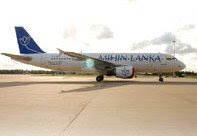 Late last evening, TACA International Airlines identified the crew members who were on board TACA Flight TAI390, which overran the runway after landing at Tegucigalpa, Honduras on the morning of May 30, 2008. The announcement confirmed that the captain had died, along with two passengers.
Late last evening, TACA International Airlines identified the crew members who were on board TACA Flight TAI390, which overran the runway after landing at Tegucigalpa, Honduras on the morning of May 30, 2008. The announcement confirmed that the captain had died, along with two passengers.Here is the exact text of News Release No. 3 posted on the TACA website on May 30, 2008 at 20:30 hrs [En español - haga clic aquí]:
In order to continue de information flow in relation to TACA’s aircraft accident, Irish registration EI-TAF, serial number 1374 manufactured operating El Salvador-Tegucigalpa route, a press conference was held tonight in Tegucigalpa. Roberto Kriete, President and CEO; Joaquin Palomo, Senior Vice-president and CFO; Julio Gomez, Flight Experience Vice-President; Armando Funes, TACA Honduras General Manager informed the following:Condolences to the family, friends and colleagues of Captain D'Antonio and the other accident victims. Best wishes to those who may have been injured for a quick and complete recovery.
Since early morning, TACA has been working along with the Honduran authorities on the procedures related to the flight 390 accident.
Our crew on board flight 390 was composed of Capitan D’Antonio, Copilot Juan Artero, cabin crew Lineth Girón, José Barraza, Herchel Downs y María Salgado, of Honduran nationality. Also flight crew members Leonel Barright, Daniel Izaguirre, Paola Mena, Brendi Mejía, and Jenny Mejía where traveling on board for repositioning purposes.
Regrettably, at the moment three people where reported deceased, captain D’Antonio, of Salvadoran nationality; Mrs. Jeanne Chantal Neele, and Mr. Harry Brautigam, to which TACA extends its profound condolences.
“All TACA Family members are deeply concerned with the demise of Captain D’Antonio, who had more than 11 thousand flight hours and was part of the airline since 1993; and the demise of our distinguished passengers Chantall Nelle and Harry Brautigam”, said Kriete.
All passengers received medical care in different city hospitals, at the moment 54 people remain under their care and the rest are following proceedings to mobilize toward their intended destinations or go back to their countries of origin.
Communication efforts are being followed with the families of the affected passengers. While this process doesn’t conclude, the airline can’t share the final passenger list.
At the moment, we can inform that seventy Hondurans, seventeen Costa Ricans, two Canadians, eight Guatemalans, six American citizens, two Spaniards, two Brazilians, nine Argentineans, three Mexicans, five Nicaraguans, two Colombians, three Salvadorans, one Georgian, one German, one Italian, and one Uruguayan were on board the aircraft.
TACA operates a new generation, all Airbus fleet complying with all regulatory regulations of the IOSA, International Operating Safety Audit (IATA Flight Safety Program) as well as the respective Civil Aeronautic Authorities, including the Federal Aviation Agency, FAA.
TACA operates two daily flights at Toncontín Airport in Tegucigalpa, which remain suspended until further notice. The airline’s operations are being strengthened in San Pedro Sula, to serve our passengers traveling towards Honduras.
The TACA Family thanks the many displays of solidarity received due to this unfortunate event and ratifies its commitment to continue serving its passengers in the Americas.
At the press conference, Dario Montes, Legal Advisor for TACA; Tomasita de Ramirez, Sales Manager for TACA Honduras; and Claudia Arenas, Corporate Communications Director where also present.
TACA will keep a permanent information process in order to deliver an updated flow of information on the different situations related to the present circumstances. TACA’s news center can also be viewed at http://news.taca.com
For inquiries about passenger status an international Call Center has been activated at:
1 (404) 5216274


























